Summary
Flea traps are useful for assessing flea populations, identifying species, and determining the success of control measures. While flea traps are beneficial adjuncts to control programs, the traps will do little to end an infestation on their own.
My Flea Trap
My Flea Trap performs significantly better than other commercial traps.
Our pick for the best flea trap is My Flea Trap. This trap was developed using scientific research. Specifically, it uses green-yellow light, and intermittent light. These two factors significantly improve performance, allowing My Flea Trap to catch 7 to 23 times as many fleas as other traps.
Comparison
 |
 |
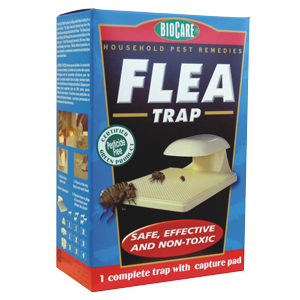 |
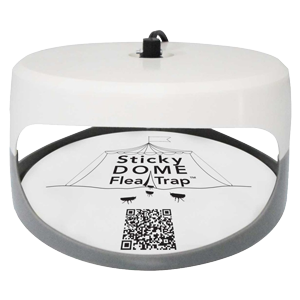 |
|
| Product Name | My Flea Trap | Victor Flea Trap | Springstar Flea Trap | Trapest Flea Trap |
| Price | $53 | $15 | $15 | $15 |
| Traps | 1 | 1 | 1 | 1 |
| Sticky Pads | 2 | 2 | 1 | 2 |
| Pad Duration | 3 – 6 months | 2 – 4 weeks | 3 – 6 months | 2 – 4 weeks |
| Refill Pads | 4 for $20 | 3 for $5 | 3 for $8 | 6 for $7 |
| Power | Batteries | Cord | Cord | Cord |
| Attractants | Light Green Light Intermittent Light |
Light Heat |
Light Heat |
Light Heat |
| Bulbs | LED | 7-Watt C7 | 5-Watt C7 | 7-Watt C7 |
| Distance | 40 feet | 25 – 30 feet | 25 – 30 feet | 25 – 30 feet |
| Use In | Indoors | Indoors | Indoors | Indoors |
| Kills | Adults | Adults | Adults | Adults |
| Product Label |
n/a |
n/a |
||
| MSDS |
n/a |
n/a |
||
| FleaScore | ||||
| Reviews |
- Prices are based on Amazon.com at time of publishing.
- FleaScores are based off of product details (price, size, active ingredients, etc), as well as reviews aggregated from 3rd party sources.
Details
How Flea Traps Attract Fleas
Of the numerous stimuli that attract fleas, visual and thermal cues play the largest role in host-finding, with visual stimuli predominating.
Light
Flea eyes have a single biconvex lens. They can sense changes in light intensity, but fleas don’t have acute vision to see images. Though limited in sight, fleas primarily use visual cues to find hosts. Adults are positively phototactic, meaning they’re drawn to light sources. When placed in a dark area, 93% of fleas move to a lighted area within 40 minutes. In natural settings, adults emerge from cocoons, climb atop nearby objects, and orient themselves towards lighted areas while waiting for a host. They tend to congregate near openings that allow light in, such as entryways. Flea traps exploit this attraction to light.
Light Color
Cat fleas can detect wavelengths between 300 and 600 nanometers (nm). Fleas are most receptive to wavelengths between 500 and 530 nm, a green-yellow colored light. Green-yellow light attracts over twice as many fleas as standard white light. Outfitting lighted flea traps with a green-yellow filter significantly improves their performance.
Intermittent Light
Fleas are more attracted to lights that are briefly turned off (10 minutes on, 5 seconds off). When the light is always on, most fleas only move a short distance towards it. They jump once the light goes off (or is blocked). Fleas interpret this interruption as a host walking in front of the light, and they leap towards the perceived shadow. The light going off simulates a moving a host. It was previously shown that movement attracts fleas, namely when a black object moves across a white background.
Fig 1 Number of adult fleas collected (y-axis) with My Flea Trap, using continuous light and intermittent light (x-axis).
Flea traps employing intermittent light consistently capture more fleas than traps with a light that’s always on. Intermittent light is 5-8 times more effective than continuous light Fig 1. In one experiment, traps with intermittent light caught 82% of released fleas, while continuous light traps caught little more than 10%.
Traps are More Effective at Night
Trap manufacturers state that efficacy is much greater at night than during the day. Laboratory tests have shown this is a true, with significantly less fleas being caught in daylight hours. However, My Flea Trap performs relatively well in the day, thanks to the trap’s green light spectrum and intermittent light.
Heat
Heat is indicative of a warm-blooded host, and will stimulate and attract cat fleas. However, overall, heat plays a minor role in locating a host. When heat is the sole signal, fleas will orient themselves towards the warmed object, but they won’t jump unless further stimuli are present.
Fig 2 Number of adult fleas collected (y-axis) with My Flea Trap altered with different attraction cues (x-axis).
Many commercial flea traps use incandescent bulbs. It’s claimed that these bulbs attract fleas when they heat up. However, this has been refuted. Attraction isn’t increased when heat is added to an LED flea trap. Similarly, a trap using heat as the only attraction stimulus won’t perform better than one without any stimuli Fig 2.
How Flea Traps Capture Fleas
Commercial flea traps use glue boards to trap attracted insects. The replaceable sticky pads immobilize fleas immediately upon contact.
Homemade flea traps often use a bowl of water, with a drop of dish soap, to catch fleas. Surfactants in the dish soap reduce the water’s surface tension, causing the fleas to sink and drown. Similarly, vegetable oil can be used in homemade traps, as the oils have around half the surface tension of water.
Do Flea Traps Work?
Assessing Flea Populations
Flea traps do work, depending on the purpose of the user. They’ll capture some adult fleas emerging from their cocoons. Traps are useful for sampling flea populations in specific areas, assessing insecticide effectiveness, and determining when an infestation has ended. Traps are also helpful as flea detectors and for identifying the species of captured fleas.
Controlling Fleas
Flea traps will do little to end an infestation on their own. However, the traps do capture newly emerged adults that may otherwise bite people or animals in the home. Flea traps can serve as an adjunct to flea control programs.
Traps only Catch Adults
Flea traps only work on adult fleas. And only 1-5% of fleas are in the adult stage. Traps are also limited to catching adult fleas emerging from their cocoons. Once a flea finds a host, it’ll stay on the animal. Flea traps won’t attract fleas off of the pet.
Trapping Efficacy
No flea trap is 100% effective. Commercial traps, with always-on incandescent bulbs, capture around 12% of adult fleas in the environment. However, a trap manufacturer’s study claims as many as 95% of fleas are captured. Intermittent light traps with green filters are more effective, capturing up to 86% of adult fleas in a room.
Pre-Emerged Adults
Even if traps captured all adults in the environment, they wouldn’t effectively control an infestation. This is because of the pre-emerged state. Once larvae pupate, adults can stay quiescent within their cocoons for up to 5 months. However, they’ll emerge in seconds when they detect heat and pressure. These cues indicate that an animal is laying on the cocoon. When they emerge, they’ll have a nearby host immediately available.
The Best Flea Trap
My Flea Trap
My Flea Trap is the best flea trap. The primary advantage it has over other traps is its use of green, intermittent light. These two factors greatly increase flea attraction.
My Flea Trap by Westham Innovations is our pick for the best flea trap. Its research-based design has been shown to be significantly more effective than other commercial traps. The main downside is the cost, which is a common complaint in customer reviews. However, there’s a money back guarantee for those who aren’t satisfied.
When researchers were monitoring flea populations, they found that commercial traps weren’t very effective. So they set out to develop a better flea trap. They studied the most attractive light spectra to fleas, as well as other behaviors. In the end, the most successful trap had a green-yellow light filter, and used an electronic timer to intermittently turn the light off and on. My Flea Trap was later developed based on these discoveries.
My Flea Trap has two narrow-spectra green LEDs, positioned 25 cm above the ground. They lights intermittently turn off and on again. The trap has a semicircular base, with a diameter of 29 cm. The lights are powered by four AA batteries, which last 100,000 hours. A corded AC adapter can also be used (neither batteries nor cord are included). There’s also a power-saving mode, where the lights only turn on in the dark. Like other traps, it uses a replaceable adhesive pad to capture fleas. The packaging claims fleas are attracted from 40 feet (12 meters) away and beyond, and that it will clear a room of adult fleas after one night of operation.
Fig 3 Percent of adult fleas collected (y-axis) from different flea traps (x-axis). Fleas were released in the opposite corner of the room from the traps, 7.2 meters away, and results are recorded after 24 hours.
My Flea Trap catches 7 to 23 times as many fleas as continuous light traps Fig 3. In small rooms (3 x 3 meters), My Flea Trap catches 86% of fleas within 20 hours. Continuous light traps only catch around 13% of fleas. Another study showed that all traps perform similarly after enough time has passed, but My Flea Trap collects fleas faster and from further away. In large rooms, after 20 hours, My Flea Trap catches around 57% of fleas released 8.4 meters away.
Good Flea Traps
Victor Flea Trap
Victor Ultimate Flea Trap is similar to other traps with continuous light, but it slightly outperforms its competitors in studies.
Victor Ultimate Flea Trap is made by Woodstream Corporation. It uses a 7 watt incandescent bulb to attract fleas. The light is suspended 10 cm above the ground. A round base (18 cm diameter) holds a replaceable glue disc to trap the attracted fleas. An outlet cord powers the trap. The manufacturer claims 93% of fleas will be caught from a distance of 9 meters.
Studies have shown that commercial traps with always-on incandescent bulbs are similar in efficacy. However, the Victor Ultimate Flea Trap performs slightly better than the others Fig 3. It’s the best continuous light trap.
SpringStar Flea Trap
SpringStar flea trap uses a light that’s continuously on, and is similar in efficacy to competitors.
The SpringStar BioCare Flea Trap also utilizes a nightlight bulb, 5 watts or less. It’s suspended 5 cm above the ground. The trap’s base is rectangular, measuring 16 by 14 cm. The replaceable sticky pads are also rectangular. A cord powers the light. The manufacturer claims that fleas are attracted and trapped from a distance of 7.5 meters under normal conditions. The SpringStar trap is similar in design and efficacy to other continuously on traps.
Sticky Dome Trap
Trapest Sticky Dome Flea Trap is similar in construction and performance to the Victor trap.
The Trapest Sticky Dome Trap by Aspectek is similar in design to the Victor trap. Less product information is available for the Trapest trap. However, it uses a 7 watt nightlight bulb, which is powered by a cord. The base is round and fleas are caught on round sticky pads. The Stick Dome trap should perform in a similar manner to other traps with always-on incandescent bulbs. And a similar level of satisfaction is found in customer reviews.
Other Flea Traps
Here’s a list of other commercial flea traps. These traps didn’t make it to our main list either because of price, availability, lack of popularity and customer reviews, poor customer reviews, or related reasons.
Modifying Commercial Traps
Commercial flea traps can easily be modified to improve their performance. When the lights are altered to emit green wavelengths, and temporarily turn off, the trapping efficacy will significantly improve.
Green Light
Commercial traps can be improved by using a green light filter, or a green light bulb. The optimal wavelengths occur between 500 and 530 nm. In one study, a commercial flea trap with a 7 watt polychromatic bulb was tested. When the trap was modified with a green filter, it caught 1.57 times more fleas than the original design Fig 4.
Fig 4 Number of adult fleas collected (y-axis) from Victor Ultimate Flea Trap, without modifications and with a green light filter (x-axis).
Intermittent Light
Altering traps to use intermittent light drastically improves their performance Fig 1. To add intermittent light, a programmable outlet timer can used. Researchers used electronic timers when they first tested the effects of intermittent light on fleas. Setting the timer to 10 minutes on and 5 seconds off provides the best results.
How to Make Homemade Flea Traps
Since flea traps primarily use light to attract fleas, homemade traps are easy to construct. The designs usually consist of a lamp placed on the ground, with a bowl of soapy water beneath the light. These traps have been used for hundreds of years. Before electricity, a lighted candle was placed in a bowl of soapy water.
Light Source
Most often, a desk lamp is used as the light source for the trap. However, nightlights are another easy solution. In one study, a simple flea trap was made by hanging a flashlight.
Capture Mechanism
Place a container of water below the light to capture and drown the fleas. This could be a bowl, plate, pan, or similar item. Disposable aluminum pans are handy. It’s important to add dish soap, such as Dawn, to the water. The detergent contains surfactants which reduce the water’s surface tension, thus forcing the fleas to sink and drown. A drop or two of dish soap will suffice. To ensure the fleas can’t escape, it may be helpful to apply petroleum jelly to the container’s rim.
Tips for Using Flea Traps
Where to Place Traps
It’s best to set up traps in rooms where pets spend the most time, or rooms where fleas have been observed. Eggs are laid on the host, but they fall off within a few hours. The eggs end up concentrated where pets frequently rest, feed, and sleep. In homes, bedrooms and living rooms are prime locations. Hot-spots within these rooms occur around beds, sofas, or pet bedding.
Flea eggs can drop anywhere the infested animal roams. They can be widely dispersed, even if the majority are clumped in hot-spots. Thus, it’s a good idea to place fleas traps (or rotate a single trap) into different rooms, even those that don’t appear infested. Flea traps are useful for determining which rooms are infested and which aren’t. By narrowing down the infested areas of the home, control efforts can be focused for optimal efficiency.

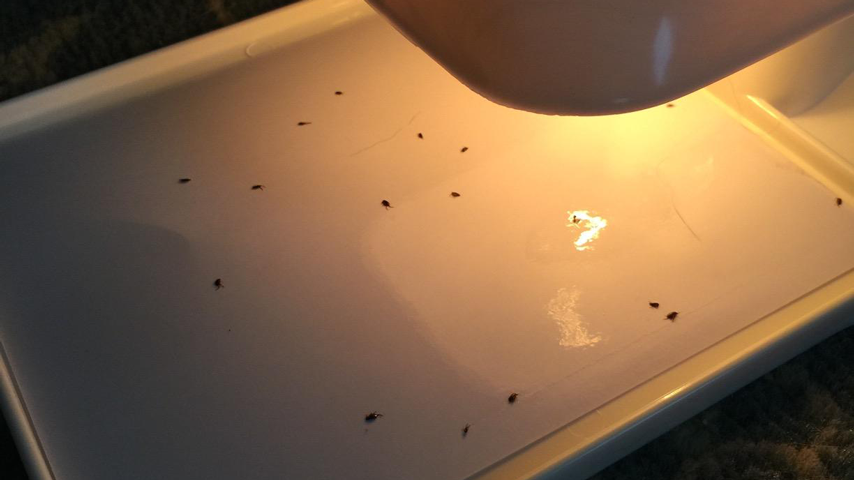

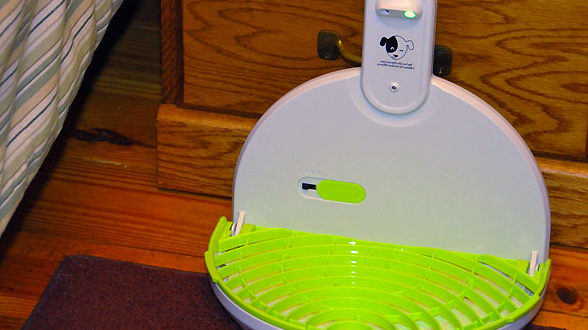
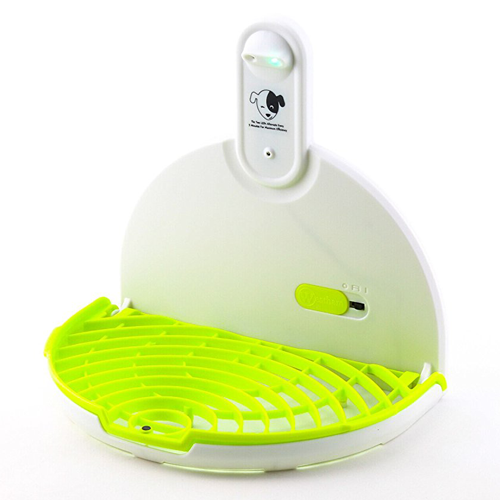

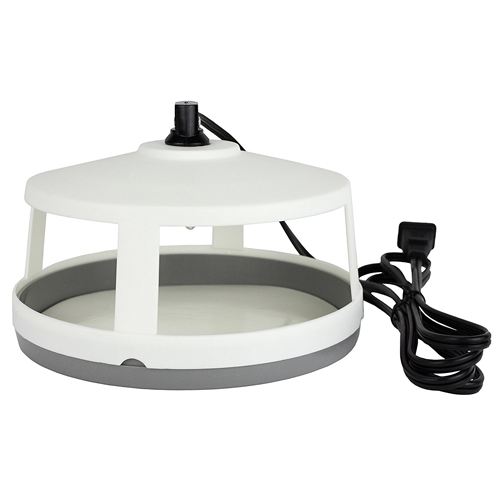
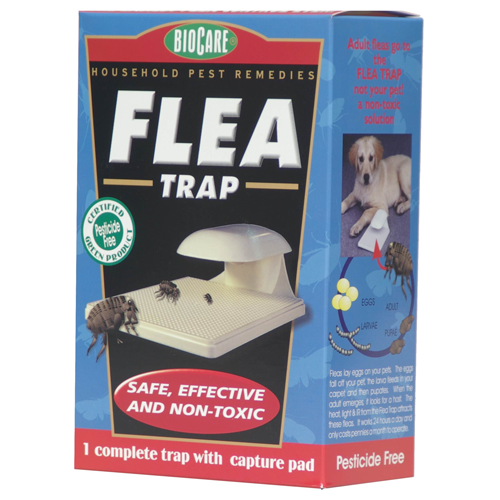
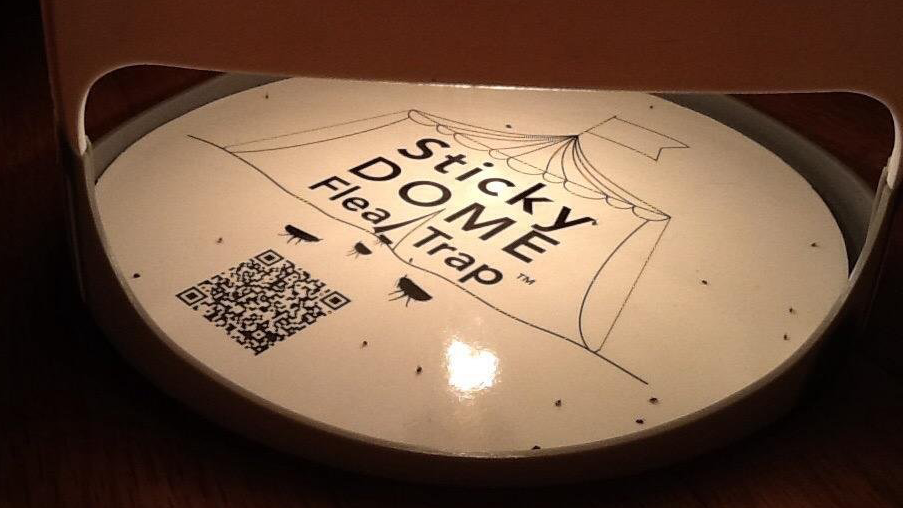
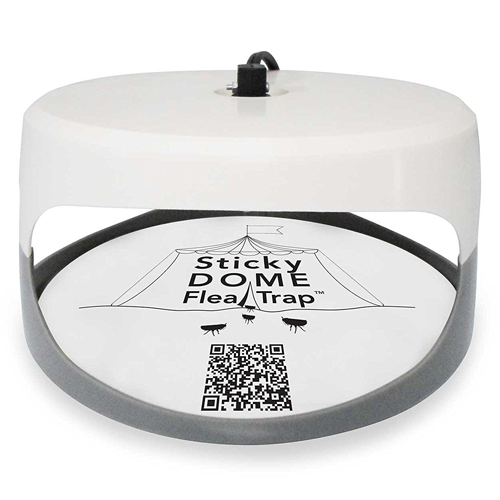


You must log in to post a comment. Log in now.
Hi. I have a 80lb black lab mix and the world’s sweetest cat. They both have fleas and out home is infested. We have been dealing with this for a couple months and just can’t find something that works. Yes we have treated the yard, pets and house all in the same day. HELP. I would like to know if you have any samples, coupons and maybe some swag. Thank you Ruth Callen 2113 General Jackson Pl. Bossier City, Louisiana 71112
Ruth, I am sorry to hear about your situation. If you’ve taken all the steps in How to get rid of fleas and it isn’t working after multiple months, then it may be time to contact professional pest control to take a look in person. There may be something specific to your situation that needs addressing in person.
I don’t have any samples or swag. This is an information based site, so I don’t even sell products.